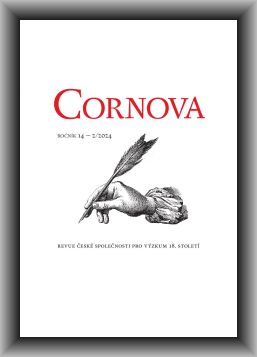The Introduction of Proofs of Noble Birth
into the Habsburg Monarchy. A New Instrument
to Administrate the Nobility (1650–1800)
The Introduction of Proofs of Noble Birth
into the Habsburg Monarchy. A New Instrument
to Administrate the Nobility (1650–1800)
Author(s): Éric HasslerSubject(s): Cultural history, Diplomatic history, History of ideas, Local History / Microhistory, Social history, 18th Century
Published by: AV ČR - Akademie věd České republiky - Ústav pro českou literaturu
Keywords: court; nobility; genealogy; transfert; administrative state; Habsburg; 18th century
Summary/Abstract: This article shows how the transfer of proofs of nobility by Maria Theresa of Austria in the 1750s led tocomplex movements between Vienna and the countries of the monarchy and produced social and culturalchanges within the nobility. The degrees of nobility are part of the representations of Germanic andCentral Europe in modern era. Having to prove one’s noble ancestry was indeed a common practice usedby chapters, military orders or princely courts since the Middle Ages.In fact, it seems that this practice only really developed in the Habsburg monarchy from the secondhalf of the 18th century, under the impulsion of Maria Theresa. As part of her policy of standardizingthe nobility, aimed at mixing elites from the various territories of the monarchy and producinga service nobility loyal to the dynasty, Maria Theresa imported this practice to impose it within themonarchy, to be appointed chamberlain (1754), to gain access to the court (1756), but also to enterthe institutions of noble ladies she created from the 1750s onwards. This practice, imported from theHoly Roman Empire and its western fringes, was a new tool of government. The sovereign’s aim was toreinforce his authority by introducing a veritable “administratization” of the nobility.
Journal: Cornova
- Issue Year: 14/2024
- Issue No: 2
- Page Range: 11-45
- Page Count: 34
- Language: English

